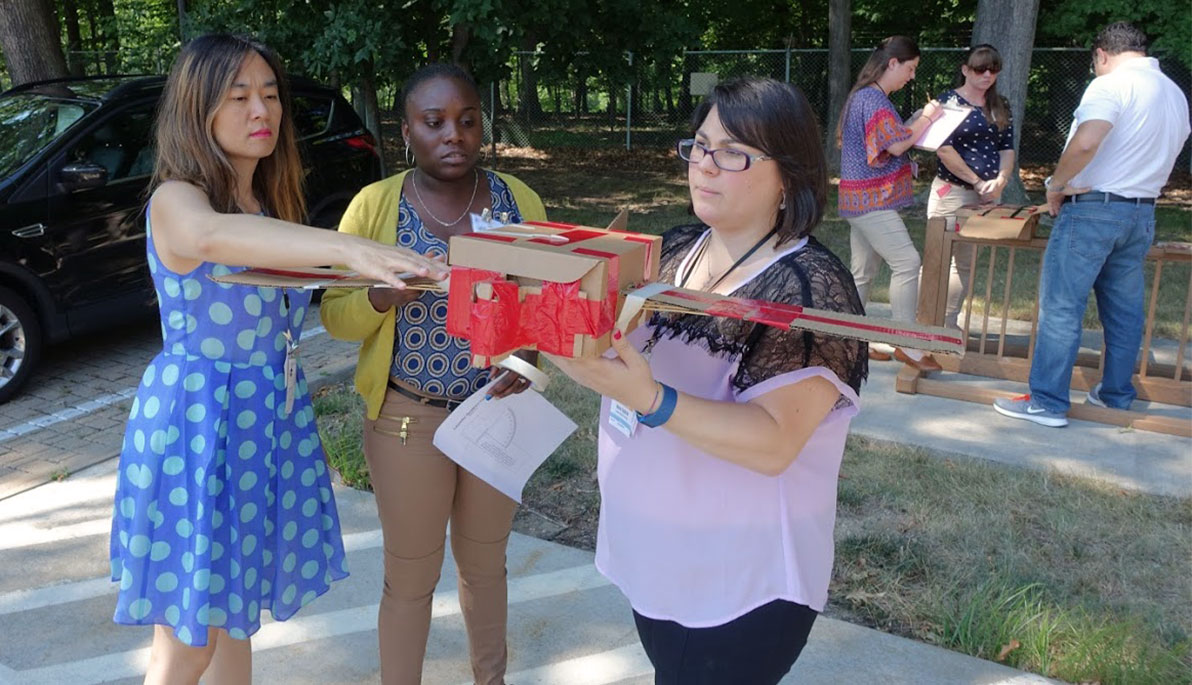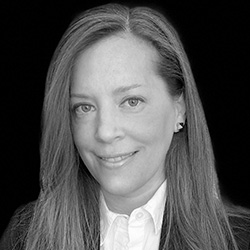News
Future Educators Reach for the Moon
September 13, 2016
Pictured from left to right: Chair and Associate Professor Hui-Yin Hsu, Ph.D, with students Shelane Edie and Maria Gagliardo at the NASA STEM Education Professional Development Program.
When you think of cool things to do in Cleveland, the Rock and Roll Hall of Fame and Museum certainly comes to mind. But for five teacher candidates enrolled in the Childhood Education program at NYIT School of Interdisciplinary Studies and Education, NASA’s Glenn Research Center was the place to go.
This summer, Shelane Edie, Maria Gagliardo, Rosalba Giarratano, Jessica Jackson, and Brianna Tracey, accompanied by Associate Dean Shiang-Kwei Wang, Ph.D., and Chair and Associate Professor Hui-Yin Hsu, Ph.D., attended the NASA STEM Education Professional Development Program. During the five-day training workshop, the group learned about NASA teaching and learning techniques and how to use NASA materials in the classroom. At the end of the workshop, they each received an NASA MEI Certificate of Completion and Lunar and Meteorite Certification, which enables the teachers to request moon and rock samples to share with their classes.
As part of their training, the group was asked to tackle several challenges, including how to engineer a satellite. To do so, they identified the purpose of the satellite and decided what instruments would be incorporated based on the satellite’s intended use. Then, the group constructed and tested it and determined how the satellite could benefit society. “We not only tried to put scientific principles to work, but we were also tasked with how to design everything,” explains Hsu. “We’re doing what they’re doing at NASA.”
With this certification, the future educators will be a step ahead of the competition when hunting for a job later on, especially based on the national trend to encourage students to pursue Science, Technology, Engineering, Arts, and Math (STEAM) fields. “It makes our students more attractive to schools that are hiring teachers with STEM skill sets. The weeklong experience and corresponding online professional training development is grounded in research-based principles of teacher development and provides rich, hands-on learning experiences,” says Hsu.
The experience also benefited NYIT faculty members. “The program helped me to better understand how STEM can be implemented throughout our elementary curriculum. As the chair of Teacher Education, I want to incorporate the NASA STEM program in the curriculum,” Hsu explains. And the program has sparked a potential new partnership. “I actually reached out to the NASA Office of Education to seek out collaborative opportunities to put together a STEM certificate program,” says Hsu, who added that “we applied and received the NASA MEI Educator Institutes Professional Development Training Grant.”
In addition to generating ideas to use in the classroom with students, the teacher candidates are in the process of writing up proposals to present NASA activities and materials at after-school programs in New York, as well as at the New York Hall of Science Museum.
“This was a wonderful, lifetime experience for all of us,” says Hsu.





